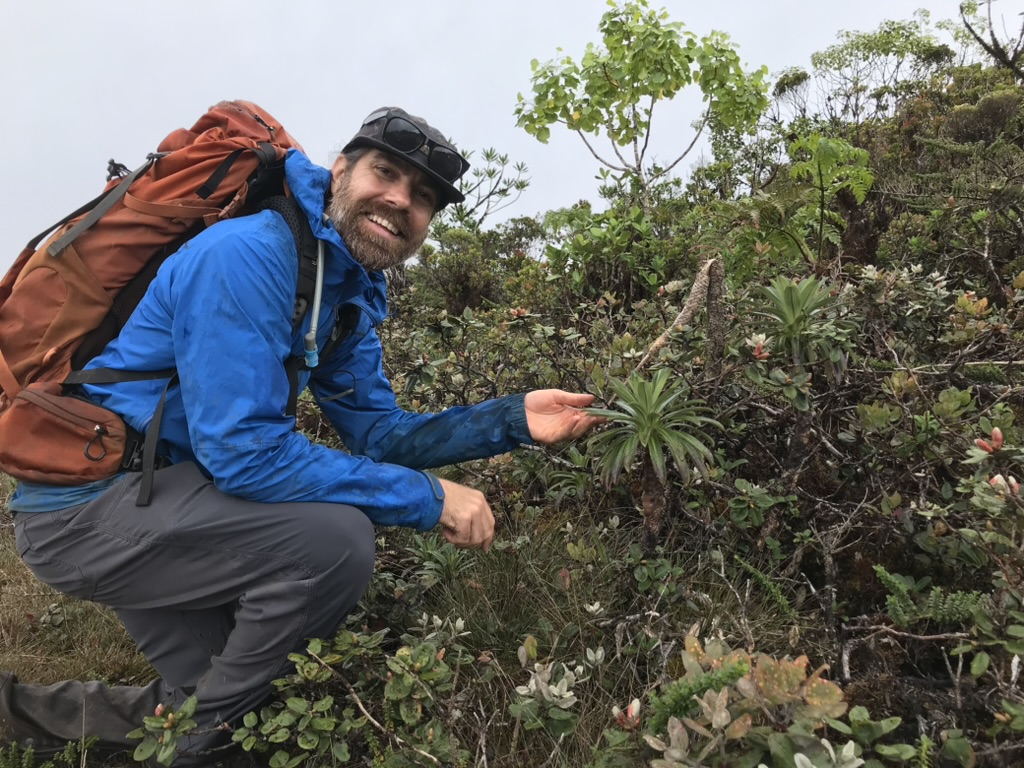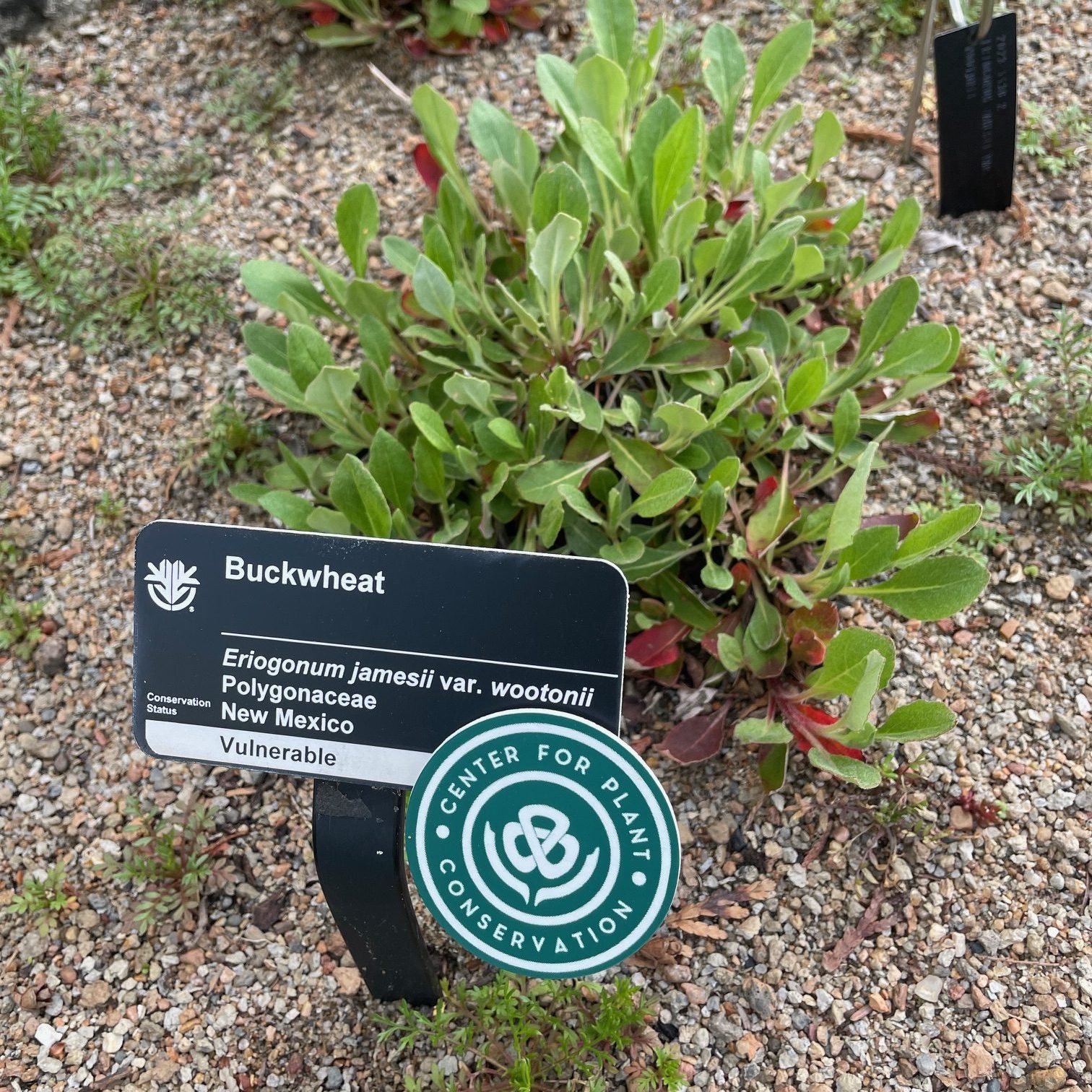SAVE PLANTS
Center for Plant Conservation
As we embrace the height of summer, we turn our attention to a critical facet of botanical research—herbaria and the herbarium specimens they house. These collections are essential to understanding plant diversity, tracking changes in plant populations over time, and guiding conservation efforts for rare and endangered species. Herbaria serve as invaluable repositories of knowledge, preserving specimens that are crucial for taxonomic studies, ecological research, and the conservation of our planet’s botanical heritage.
In this issue, we feature an article by Wendy Hodgson, Herbarium Curator Emerita & Senior Research Botanist of Desert Botanical Garden, who provides an in-depth look at their remarkable herbarium—shedding light on the significance of these collections and the meticulous work that goes into preparing and maintaining herbarium specimens, particularly those of cacti, agaves, and yuccas.
We are also thrilled to share updates and new resources from the CPC National Office, including the launch of two new modules in our Applied Plant Conservation Course which focus on making conservation seed collections (including herbarium vouchers), seed banking best practices, and the preservation of exceptional species. Additionally, we recap a recent webinar discussing the preliminary findings of CPC’s collaborative Seed Longevity Study, offering a glimpse into groundbreaking research that will help inform curation and management decisions for the seeds of rare plant species.
Together, these features underscore the critical role that herbaria, educational resources, and cutting-edge research play in advancing our shared mission of conserving the world’s rare and endangered plant species for future generations.
Sincerely,
The CPC National Office Team
Desert Botanical Garden's Herbarium: A Crucial Resource for Botanical and Conservation Research
A herbarium (herbaria, pl.) is a collection of dried herbarium plant specimens collected over broad geographic ranges over many years for study. There are nearly 100 ways we use herbarium specimens, a number that will increase in the future. They provide basic information to understand the world’s biodiversity by providing plant identification, distribution, morphological, geographical, phenological, geological, cytological, molecular, climatological, biochemical, ecological and evolutionary data. They represent a plant growing at a particular place and ecological niche at a particular time. Specimens provide information on the health of an ecosystem. Future generations will use specimens in ways we do not yet know.
Who knew more than 20 years ago that herbarium specimens could provide DNA that facilitates our understanding of the evolution of plants and the identification of new species and the processes by which new species arise? Or that specimens could provide material to use in climate studies that are so important today? Both of these uses are critical for addressing conservation issues.
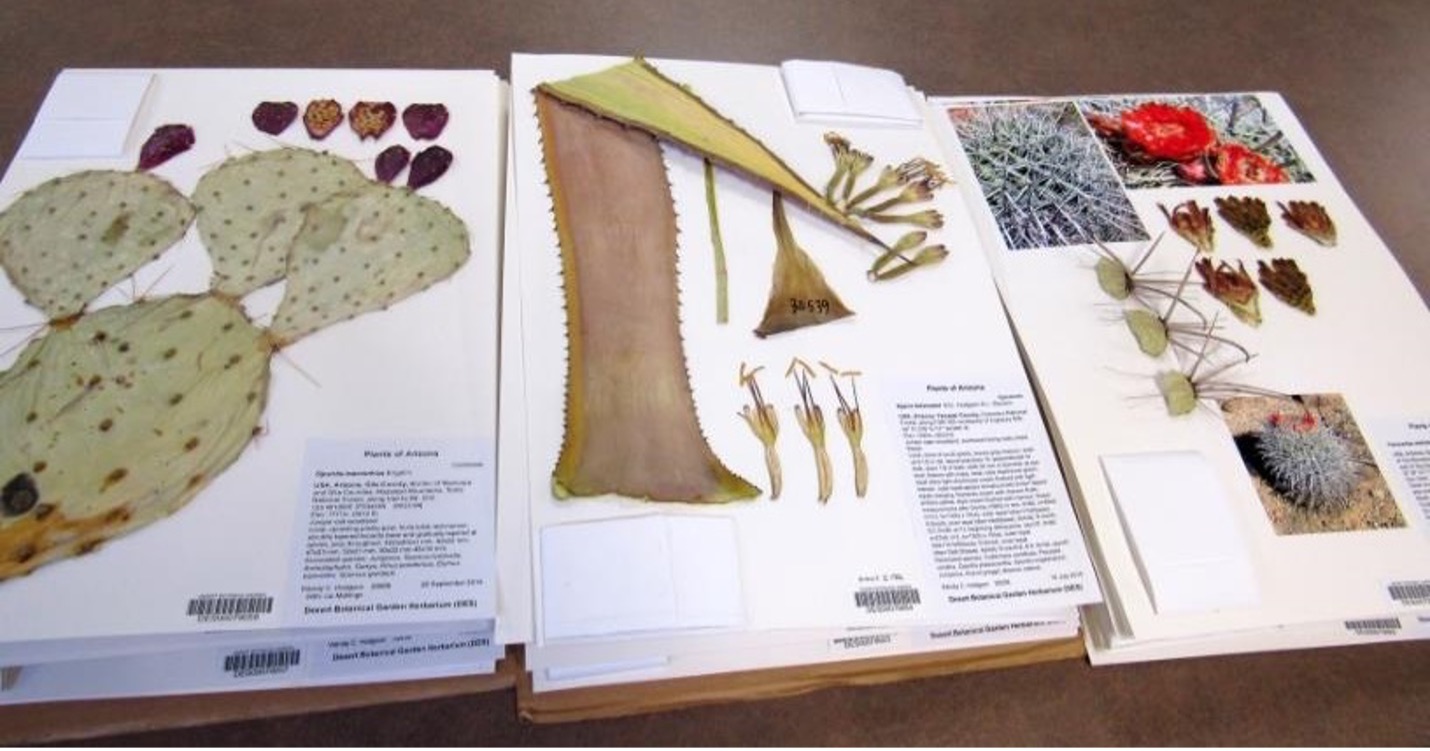
We credit Luca Ghini (1490-1556) with mounting dried plants on paper, a practice that spread over Europe by his students. However, he glued several specimens on a page inserted into a book, thus placing them into a fixed order from which no one could remove without destroying the specimens. In 1751, the Swedish naturalist Carolus Linnaeus advised people to mount one specimen per sheet rather than binding the sheets together and storing them in a specially built cabinet similar to those we use today, so one can insert, remove and reinsert individual sheets easily at any place or time, allowing for more growth. If only Ghini and Linnaeus knew what the impact of their ideas would be on the world centuries later!
Desert Botanical Garden’s herbarium in Phoenix, AZ is the largest herbarium in Arizona that is supported by a nonprofit institution and is the fourth largest herbarium in the state. E.R. “Jim” Blakely, Desert Botanical Garden’s Assistant Botanist, assembled the Garden’s first set of herbarium sheets in 1950, and under J. Harry Lehr’s direction, the herbarium grew from a modest start of approximately 2200 specimens to become a designated National Resource in 1976—one of only 105 herbaria in the nation to be designated as such.
The herbarium continues to focus on the flora of arid and semi-arid regions of the world, with particular emphasis on the southwestern U.S. and northern Mexico. Taxonomic specialties include the often difficult to press Cactaceae and the subfamily, Agavoideae, which includes agaves, yuccas and hesperoyuccas. Today, it houses over 100,000 specimens, including one of the best collections of cacti and agaves in the world, providing essential data for numerous taxonomic and systematic treatments, including Intermountain Flora and Flora of North America, respectively.
This is especially significant considering that cacti are the fifth most endangered organisms on the planet and many agaves are threatened. Because many of the Garden’s Living Collection has provenance data, they are especially valuable for study. Recognizing this, in 1993, Edward Anderson and I developed a formal program to voucher the Garden’s Living Collection conducted solely by Garden volunteers who have and continue to play an integral role in the herbarium’s growth for many years. We currently have 16 volunteers from all walks in life, including retired professors, helping in the herbarium.
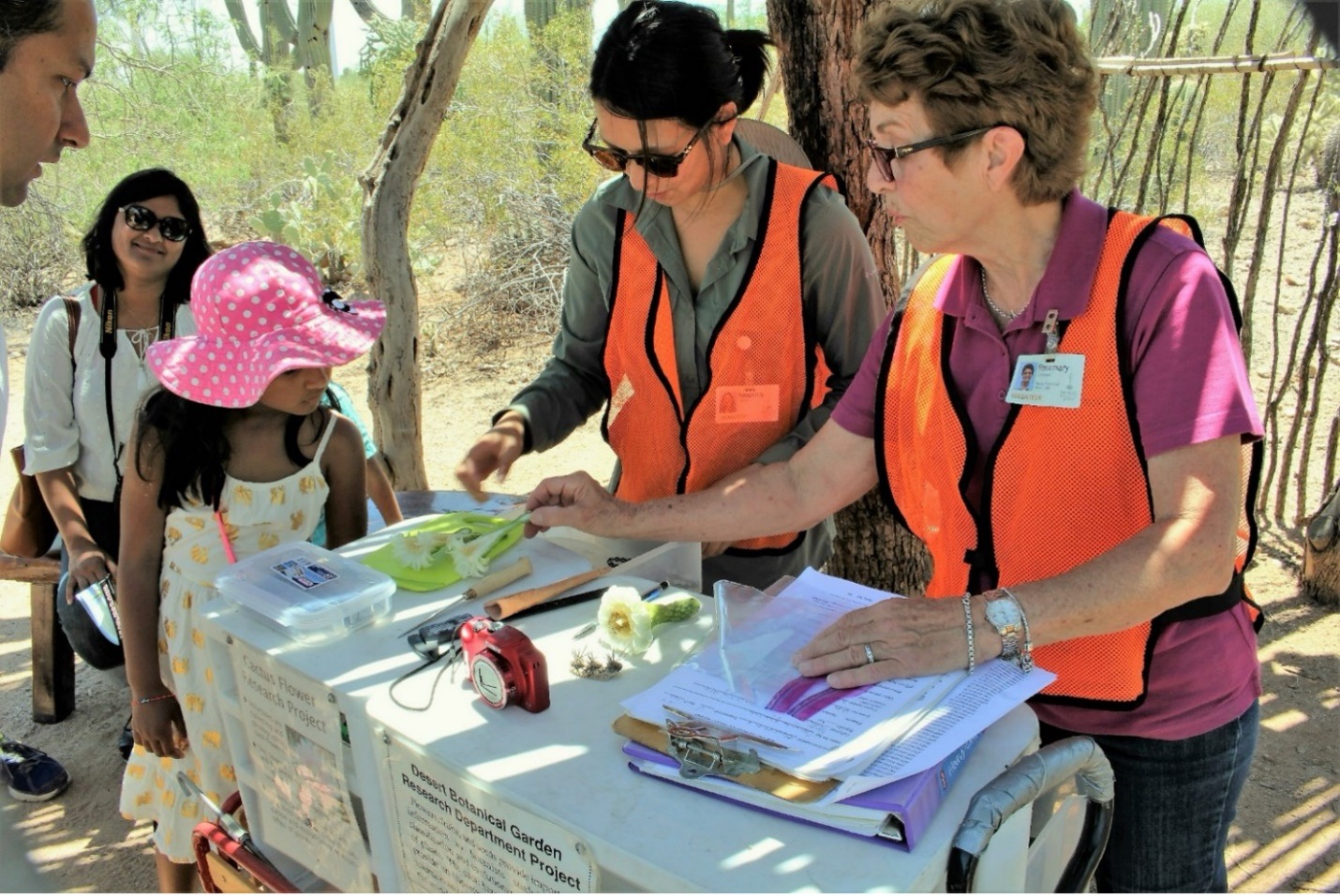
The Garden’s herbarium and other herbaria continue to play an especially important role during these climate-challenging times. Climate scientists estimate that 41% of the land surface is arid and semi-arid. By the end of the 21st century, 56% will experience desertification, dramatically affecting human health, especially in deserts. Arid zones, including Phoenix and the greater Southwest, are laboratories providing scientists with numerous opportunities for study. Floristic, ethnobotanical, systematic, and eco-physiological studies in the Southwest, supported by herbarium specimens, are especially critical.
Herbaria, like the one at Desert Botanical Garden, not only preserve the botanical history of our planet but also provide critical data for current and future scientific research and conservation actions. As climate challenges and other threats to rare and native plants intensify, the invaluable resources and knowledge held within these collections will continue to be essential in understanding and protecting our natural world.
-
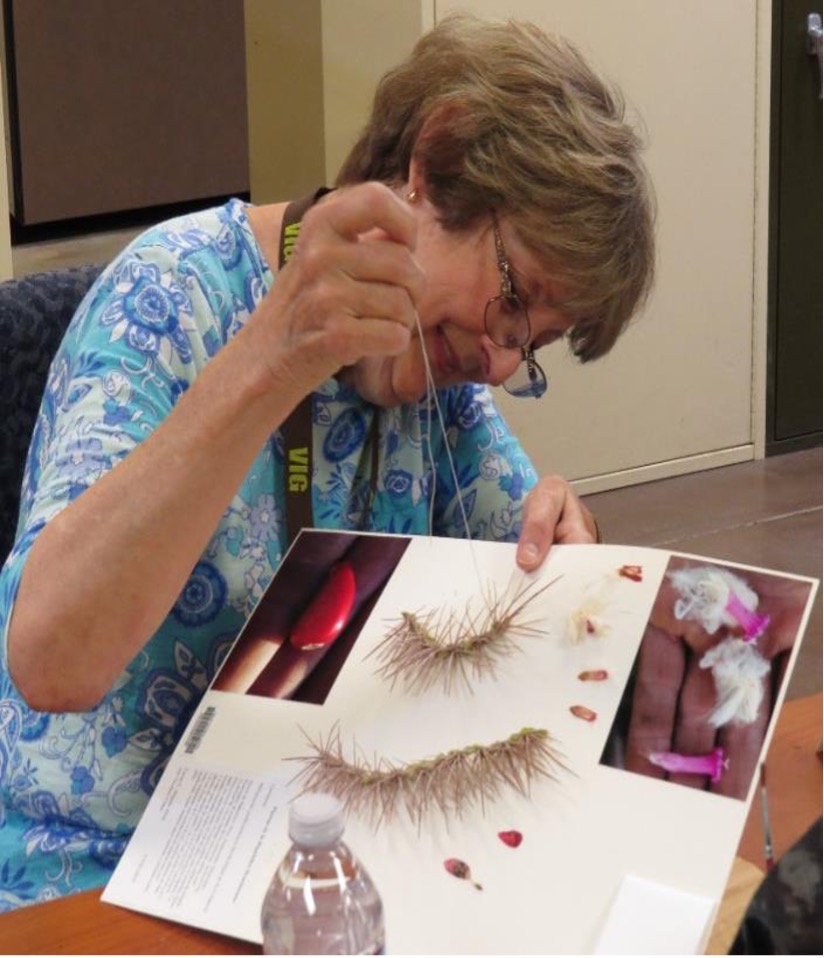
A volunteer sewing specimen on herbarium sheet at Desert Botanical Garden. Photo courtesy of Wendy Hodgson. -
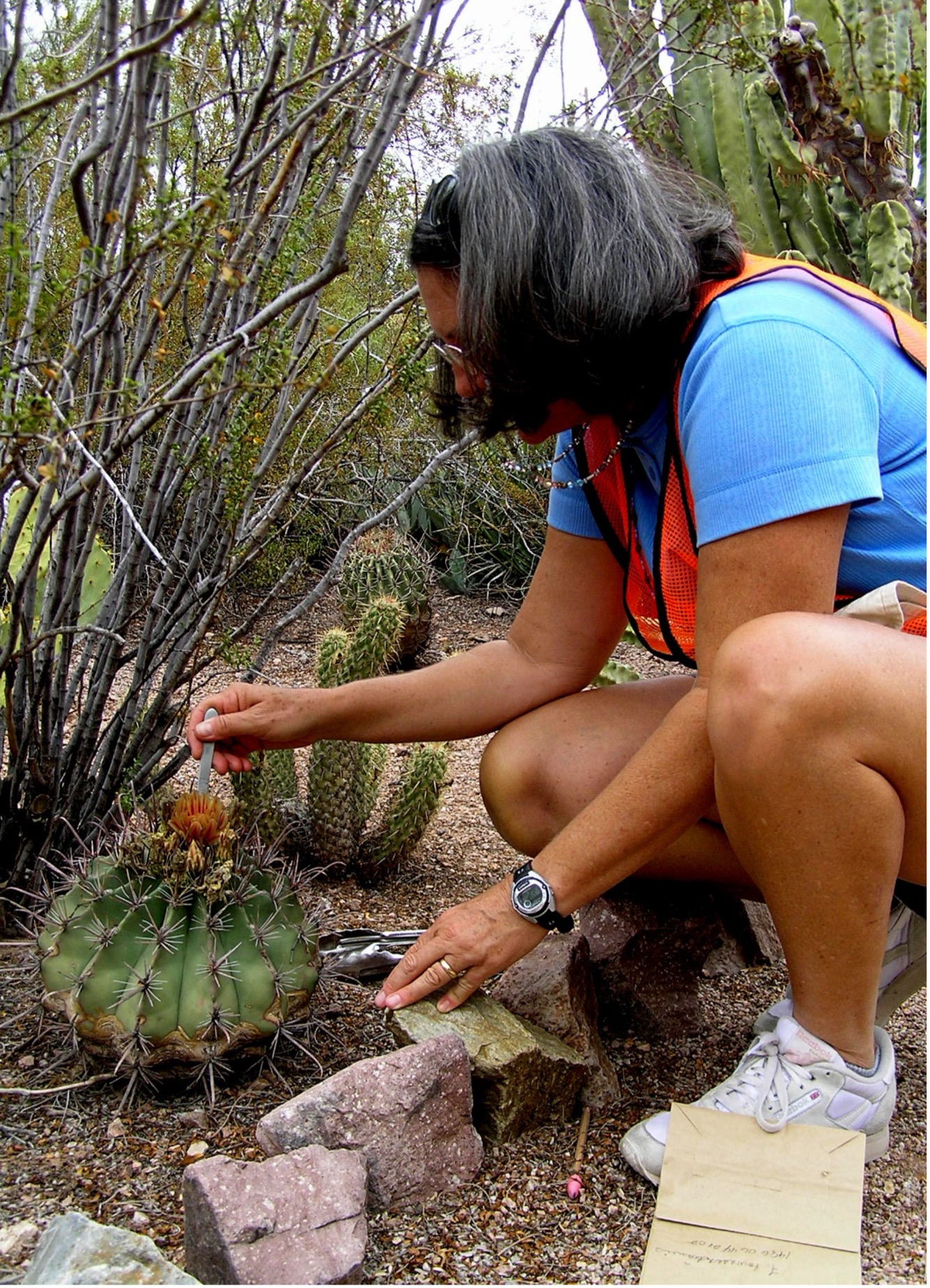
A volunteer collecting material for herbarium specimens from Desert Botanical Garden’s Living Collection. Photo courtesy of Wendy Hodgson. -
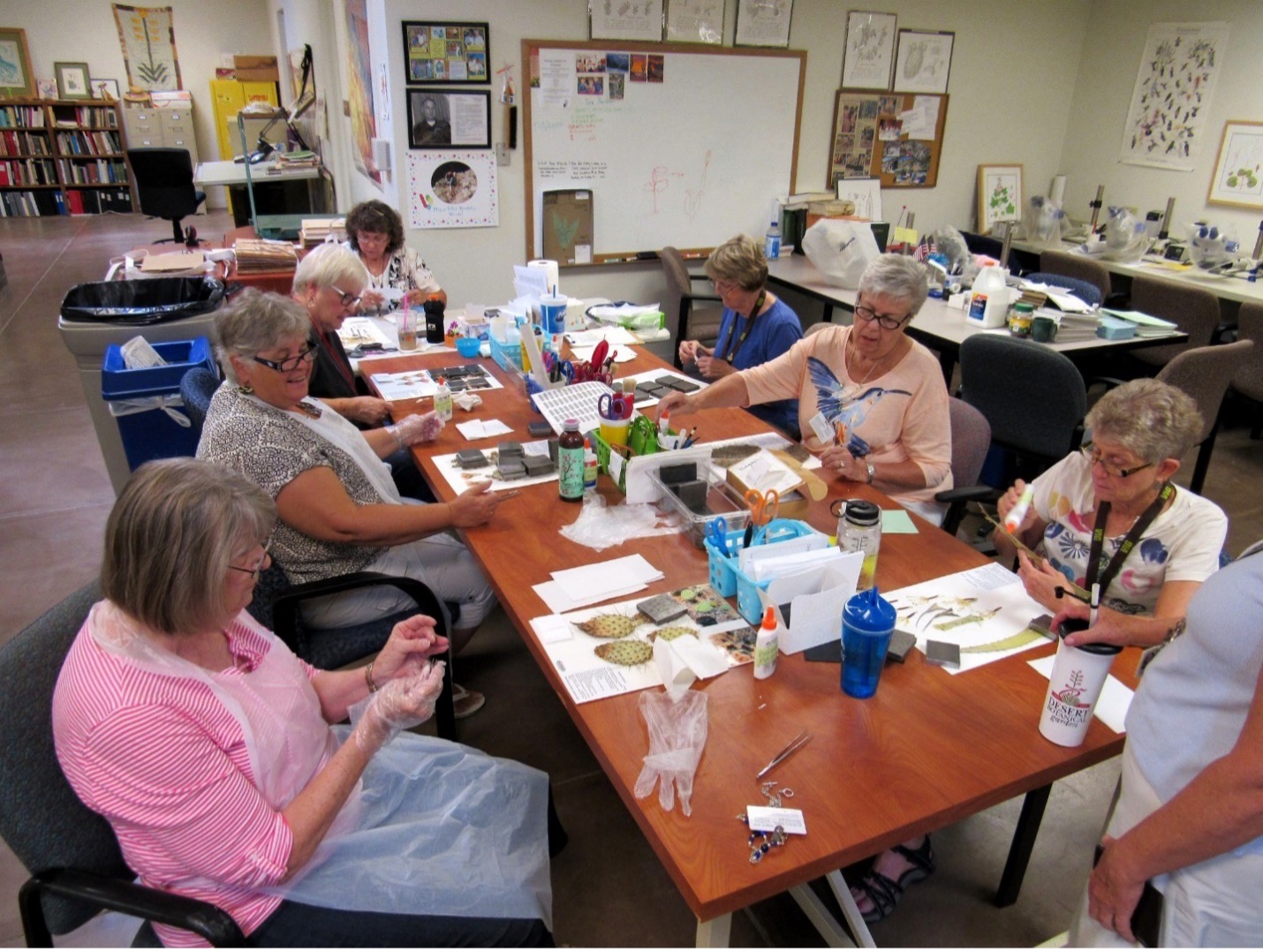
Volunteers mounting specimens at Desert Botanical Garden's herbarium. Photo courtesy of Wendy Hodgson.
New Modules Launched for the Applied Plant Conservation Course
The Center for Plant Conservation (CPC) is thrilled to announce the launch of Modules VI and VII of its Applied Plant Conservation Course—a free, online professional development training designed to equip both current and prospective members of the botanical workforce with the tools and knowledge needed for effective rare plant stewardship and conservation. These new modules delve into vital aspects of plant conservation, focusing on best practices for seed collections and seed banking (Module VI) and the conservation of exceptional species (Module VII).
Module VI offers an in-depth look at planning conservation seed collections and best practices for making seed collections in the field—from obtaining permits and the logistics of getting to plant populations, to assessing seed ripeness, collecting without harming the wild population and making herbarium vouchers. It also delves into best practices for conservation seed banking, including methods for preparing orthodox seeds for long-term storage, evaluating seed quality, drying seeds to appropriate relative humidity and temperature, germination trials, equipment and materials needed, and more.
A highlight of Module VI are lessons focused on the importance and purpose of herbarium specimens, which take participants on journeys into the field to demonstrate how species are collected and vouchered. The Making an Herbarium Voucher lesson (preview at left) created by scientists from California Botanical Garden, guides participants through the process of creating high-quality herbarium specimens, including how to record essential data for proper filing and inclusion in online databases, how to protect and process specimens in the field, the tools and materials required for field pressing, and the critical steps for drying and long-term storage of specimens in an herbarium cabinet.
Additionally, a special lesson series (preview at right) follows Wendy Hodgson of Desert Botanical Garden into the desert Southwest and into the herbarium to learn how to collect and process cacti, agaves, and yuccas to create beautiful and informative herbarium specimens, as well as how proper documentation impacts knowledge and conservation efforts of species in these families—many of which are rare, threatened, or endangered. Participants will also learn about the tools of the trade needed to safely collect these large and often prickly specimens (no suit of armor required!).
While Module VI explores orthodox seed banking methods, Module VII presents the fundamentals of exceptional species conservation—from defining and determining exceptionality to the conservation strategies and methods used to preserve these species that cannot be stored with traditional seed banking methods. Experts from the Cincinnati Zoo & Botanical Garden’s Center for Conservation and Research of Endangered Wildlife (CREW) share their extensive experience in the preservation of exceptional species, offering detailed guidance on the best practices for establishing tissue cultures—including from seeds, spores, or vegetative tissue, with an emphasis on maintaining genetic diversity and viability—as well as utilizing cryopreservation to store plant tissues in liquid nitrogen at ultra-low temperatures.
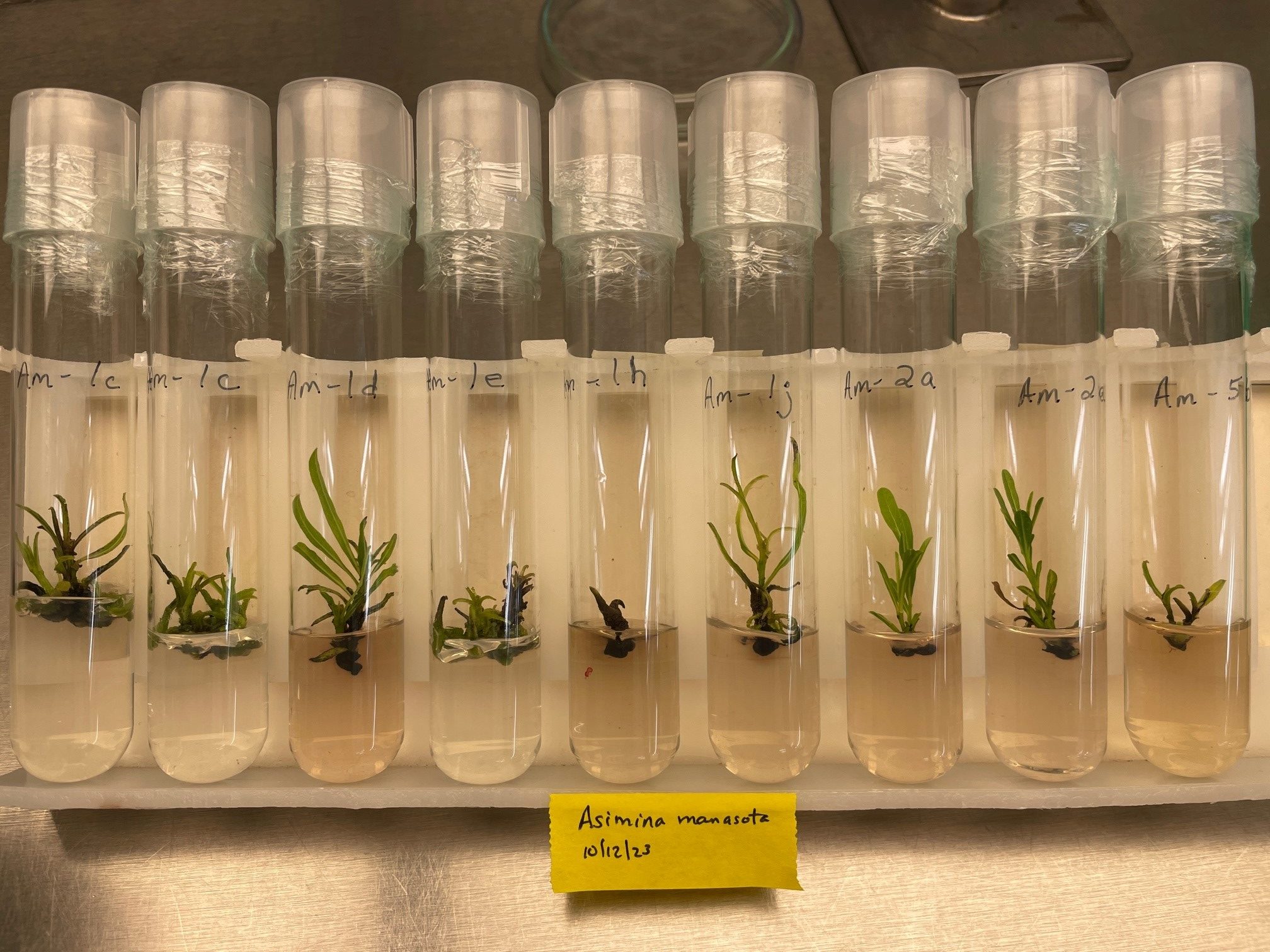
Module VII also highlights the importance of field genebanks as a vital conservation strategy, especially for species that cannot be preserved through traditional seed banking or cryopreservation. Field genebanks serve as living collections, where plants are cultivated and maintained under controlled conditions, allowing for ongoing study and propagation. These collections play a critical role in safeguarding genetic diversity, providing a reservoir of plant material that can be used for restoration efforts and research.
We invite you to explore these new modules of the Applied Plant Conservation Course, which is designed to equip conservation professionals with the skills and knowledge needed to effectively protect and preserve rare and endangered plant species. Whether you’re a seasoned botanist or new to the field, these courses offer valuable insights into the science and practice of plant conservation.
________________________________________________________________
CPC is grateful to our network partners from the following institutions who developed lessons for Modules VI and VII of the Applied Plant Conservation Course:
California Botanic Garden | Chicago Botanical Garden | Cincinnati Zoo and Botanical Garden | Denver Botanic Gardens | Fairchild Tropical Botanic Garden | Missouri Botanical Garden | Montgomery Botanical Center | National Tropical Botanical Garden | San Diego Zoo Wildlife Alliance | Santa Barbara Botanic Garden
Partial funding for the Applied Plant Conservation Course is generously provided by:
BLM California | Agreement No. L20AC00413
BLM Colorado | Agreement No. L20AC00374
BLM Nevada | Agreement No. L20AC00266
Sharing Insights from CPC’s Seed Longevity Study
The Center for Plant Conservation and its partners at the San Diego Zoo Wildlife Alliance and the National Laboratory for Genetic Resource Preservation (NLGRP) recently hosted a webinar to share preliminary insights from a four-year research study evaluating the aging and longevity of wild rare plant species’ seeds in long-term orthodox seedbanks.
This Institute for Museum and Library Services-funded Seed Longevity Study—which utilizes RNA integrity number (RIN) as a metric of seed aging—compared the germination-based viability, RNA integrity, and lipid biophysics of seeds held in frozen storage for 15+ years to seed recollected or regenerated from the same plant population. The study tested the hypothesis that RIN can help approximate seed health in storage, which can be used to inform curation and management decisions surrounding rare plants. The viability of seeds from over 100 species were assessed during this study and research was collaboratively conducted by CPC, NLGRP, and 21 CPC Conservation Partners from throughout the United States.

The webinar featured informative presentations by Dr. Katie Heineman of the San Diego Zoo Wildlife Alliance, and presentations from Lisa Hill, Dr. Hannah Tetreault, and Dr. Chris Walters of NLGRP. While the findings discussed during the webinar are preliminary, the study has shown that most of the 20+ year-old seeds are alive, and that seed banking is an effective method of ex situ conservation for wild rare plant species. The team also highlighted patterns in seed longevity between plants families and ecological groups that could be keep to predicting seed longevity on a broader set of rare species.
A recording of the webinar will be sent to all registered participants. If you did not register, but would like to receive the webinar recording, please contact info@saveplants.org.
National Collection Spotlight: Avon Park Rabbit-bells
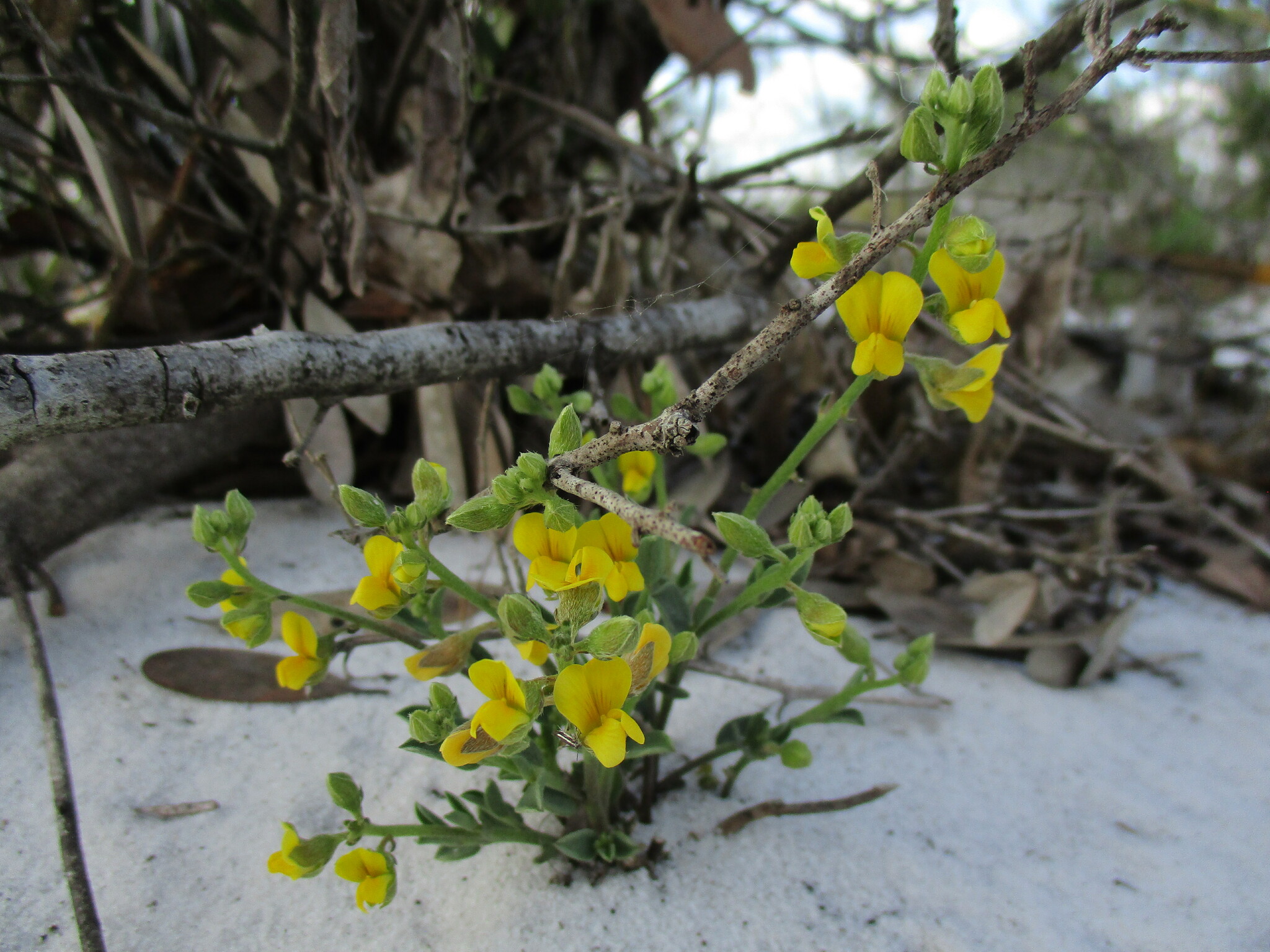
As Seen on RPA: Collecting Genetic Samples from Herbarium Plant Vouchers and Plant Populations
Field biologists can make enormous contributions to the scientific community by taking small steps to ensure genetic material from the rare plants in their care are available for future study. This video featured on the Rare Plant Academy Video Library outlines methods for sampling and storing plant tissue for future genetic analysis from both herbarium vouchers and from multiple individuals from a wild rare plant population. This sampling method may not be sufficient to answer all genetic questions, but can provide raw material that can help answer important questions especially if a plant population is declining or severely threatened. View even more plant conservation videos on the Rare Plant Academy.
Video storyboard contributed by: Dr. Jennifer Ramp Neale, Denver Botanic Gardens.
Get Updates
Get the latest news and conservation highlights from the CPC network by signing up for our newsletters.
Sign Up Today!Ways to Help CPC

Conservation Advocacy Initiatives

Donate to Save Endangered Plants
Without plants, life as we know it would not be possible. Yet two in five of the world’s plants are at risk of extinction. More than ever before, rare plants need our help!
When you support the Center for Plant Conservation (CPC) by making a charitable gift, you help advance our mission to safeguard rare plants by advancing science-based conservation practices, connecting and empowering plant conservationists, and inspiring all to protect biodiversity for future generations.
Your donation makes it possible for CPC to offer educational resources that support and train our botanical community, advance science-based conservation research, maintain the National Collection of Rare and Endangered Plants, and so much more.
The Center For Plant Conservation is a 501 (c) (3) non-profit organization (EIN# 22-2527116). Your gift to the Center for Plant Conservation is 100% tax deductible.
Your gift ensures CPC’s meaningful conservation work will continue. Together, we save more plants than would ever be possible alone—ensuring that both plants and people thrive for generations to come. We are very thankful to for all that you do to help us Save Plants!
Donate to CPC
Thank you for helping us save plant species facing extinction by making your gift to CPC through our secure donation portal!
Donate Today
